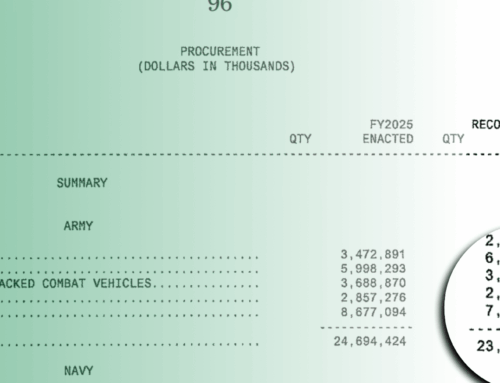In the late 1980s, recognizing both the need to reduce the Pentagon’s excess infrastructure capacity and the legal barriers that made it nearly impossible to close domestic military installations, Congress created a process for an independent commission to recommend base closures and realignments. Lawmakers would then vote on the recommendations as a single package. The resulting process—Base Realignment and Closure (BRAC)—remains the most comprehensive and equitable approach to restructuring domestic military infrastructure. The last BRAC round was initiated in 2005.
Excess Infrastructure Capacity
Excess infrastructure capacity refers to the amount of property the Pentagon owns that exceeds its operational needs. The Pentagon’s most recent publicly available estimate found excess capacity between 19 and 22 percent. The Department argued that this surplus “requires a comprehensive BRAC process to reduce excess while enhancing military value, achieving recurring savings, and ensuring retention of excess space for contingency and surge requirements such as changed missions, tactics, and technology.” Since that study, the Pentagon’s excess capacity has likely continued to grow.
Net Annual Recurring Savings
The Pentagon has estimated that previous BRAC rounds are saving taxpayers $12 billion per year. Adjusted for inflation to FY 2024 dollars, that figure rises to approximately $15.9 billion per year in net annual recurring savings. However, analysts have identified several shortcomings in the Pentagon’s estimates. Accounting for these issues where possible, Taxpayers for Common Sense conservatively estimates that from FY 2012 to FY 2023, previous BRAC rounds have saved taxpayers an average of $13.8 billion per year when adjusted for inflation.
If a new BRAC round achieved net annual recurring savings on par with average estimated savings from previous rounds, it would save taxpayers an estimated $2.7 billion per year.
Community Economic Impacts
The potential economic impacts of base closures and realignments on nearby communities are frequently cited by lawmakers as a major concern in any effort to authorize a new round of BRAC. However, data from the 2005 BRAC round show that, on average, communities that experienced major closures performed as well as—or better than—the national average in the ten years following the closure announcements, based on unemployment rates and per capita personal income.
From 2005 to 2015:
- Counties facing major closures saw their average unemployment rate drop by 0.86 percentage points relative to the change in the national average. In 2005, the unemployment rate in these counties averaged 6.35 percent; by 2015, it had declined to 5.69 percent.
- These counties also experienced real per capita personal income growth that was, on average, 2.5 percentage points lower than the national rate. Still, incomes grew in the ten years following the closure announcements by $4,220 in real terms—compared to $5,655 nationally.
While there were outliers and cases of economic hardship, the data shows that communities can—and often do—improve their long-term economic outcomes by repurposing former base land for more productive economic uses and diversifying their economies.
Areas for Improvement
The Pentagon’s estimates of BRAC-related costs and savings have been far from perfect. To improve accuracy in future rounds, Congress should require the Pentagon to:
- Establish baseline operating costs at installations recommended for closure or realignment,
- Account for estimated environmental cleanup and caretaker costs after implementation, and
- Include Military Personnel costs at facilities receiving new or expanded missions.
Upfront implementation costs in the 2005 BRAC round were higher than anticipated, primarily due to unanticipated requirements at facilities receiving new missions as a result of BRAC recommendations, which increased construction costs. Many of these additional costs stemmed from the authorizing legislation’s prioritization of military value over cost and savings in the selection criteria. To reduce upfront costs and maximize savings earlier on, Congress should require that recommendations in future BRAC rounds meet selection criteria related to both military value and cost/savings, rather than giving priority consideration to military value, which can lead to more costly recommendations. Congress should also mandate independent reviews and approval of any new requirements identified after the BRAC Commission’s recommendations are approved.
While many communities affected by the 2005 BRAC round fared relatively well, some did experience economic hardship. To help mitigate these impacts in future BRAC rounds, Congress should increase appropriations for economic adjustment assistance—particularly for communities facing more significant disruptions.










